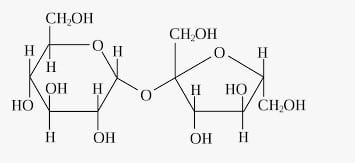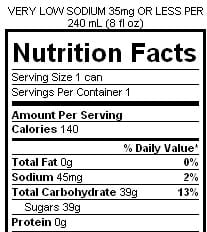« ♥ Previous post | Next post ♥ »
Let’s continue our Keto research and look at carbs
What are Carbohydrates?
There are 2 types of carbs, the simple and the complex ones.
Simple carbs are various sugars, like glucose and sucrose (table sugar), are simple ones.

These carbs are small molecules and are broken down and absorbed by our body quickly. They are the fastest source of energy.
Unfortunately, these carbs increase the level of blood glucose (blood sugar) very fast if not consumed!
Dairy products, fruits, honey, and maple syrup comprise lots of simple carbs, thus provide the sweet taste in most candies and cakes.
Simple carbs taste so good but increase our blood glucose… Good and bad 🙁
Complex carbohydrates
These carbs are in fact long strings of simple carbs. It’s easy to understand that our body will break down the multiple strings of simple carbs which are so easy to transform into energy.
They are slower carbs, but still faster than protein or fat.
Because they need to be broken up into simple carbs, they increase blood sugar levels slower and to lower levels than simple carbs, but for a longer time.
Two choice… fast and short-lived simple carbs or slower and long lived complex carbs… worse part… guess what… there is even worse… carbohydrates are broken down into glucose, fast source of energy, BUT they turn into FAT 🙁
Excess glucose gets accumulated in the liver as glycogen or, with the help of insulin, converted into fatty acids, circulated to other parts of the body and stored as fat in adipose tissue. Souce: Berkeley.edu
Do you remember your Mom telling you to go for a walk after a meal… yes, to burn as much fast simple carbs as possible.
Complex carbs consist of starches and fibers, which exist in wheat based products (delicious breads and pastas), many grains (rye and corn), beans, and root vegetables (potatoes, beets…)
Carbohydrates types
-
- Refined
- Unrefined
Refined means that the food is processed, even highly processed. The fiber, bran, many of the vitamins and minerals they contain, are stripped away.
Fewer fibers… easier to break and digest and they contain about the same calories – very cool, on paper.
Refined carbs are often enriched by adding vitamins and minerals to improve their nutritional value.
A good example is Soy beans and Tofu each to 100 grams
| Unrefined Soy | Refined Soy like Tofu |
|
|
Big difference between unrefined and refined and I am not talking about soy milk which depending on the brand can have for 100 grams only 2 grams of protein and a little over 25g of added sugar – completely defeating the diet concept.
Conclusion about carbs
If we consume more carbohydrates than we need, the body stores some of these carbs within cells (glycogen) and converts the rest to fat.
Glycogen is a very complex carbohydrate that the body can easily and rapidly convert to energy. Glycogen is stored in the liver and the muscles.
Let’s have a break … can you imagine the beauty of the machine that our body is? Converting complex carb into simple carbs for immediate use and converting the leftovers into a very complex carbs that it stores in muscles so it can easily and very quickly use as energy when needed… Real perfection!
The amount of carbohydrates stored as glycogen can provide almost a day’s worth of calories. Guess what happen when we are running long distance and suddenly… we “hit the wall”… yes, muscles’ glycogen reserves are empty. We all have seen athletes collapsing on an empty tank.
A few other body tissues store carbs as complex carbs that cannot be used to provide energy.
Most experts recommend that about 50 to 55% of total daily calories should be carbohydrates. On a 2,000 calories a day, 1,000 should be carbs, BUT… Less than 10% of total daily calories should come from sugars. Meaning that on a 2,000 calories diet ONLY 200 calories a day should come from sugar – bye bye sweets 🙁 at 4 calories per gram of sugar, one famous drink below and you cover almost 80% of your sugar intake for the day!
 Sugar includes brown sugar, corn sweetener, corn syrup, dextrose, fructose, glucose, high-fructose corn syrup, honey, invert sugar, lactose, malt syrup, maltose, molasses, raw sugar, sucrose, trehalose, etc. Remember that naturally occurring sugars, such as those in fruit or milk, are not added sugars.
Sugar includes brown sugar, corn sweetener, corn syrup, dextrose, fructose, glucose, high-fructose corn syrup, honey, invert sugar, lactose, malt syrup, maltose, molasses, raw sugar, sucrose, trehalose, etc. Remember that naturally occurring sugars, such as those in fruit or milk, are not added sugars.
Glycemic index
The glycemic index of a carb represents how quickly its utilization increases blood sugar levels. Values range from 1 (the slowest) to 100 (the fastest, the index of glucose). However, how quickly the level increases also depends on what other foods are ingested at the same time and other factors.
I will not expand too much on this index, but if you are interested, I can’t recommend enough the book by Shari Lieberman “Glycemic Index Food Guide: For Weight Loss” on Amazon – less than $8

Leave a Reply